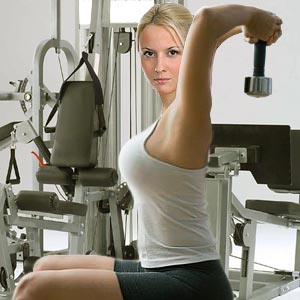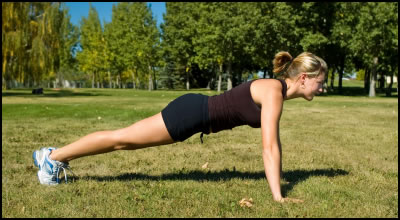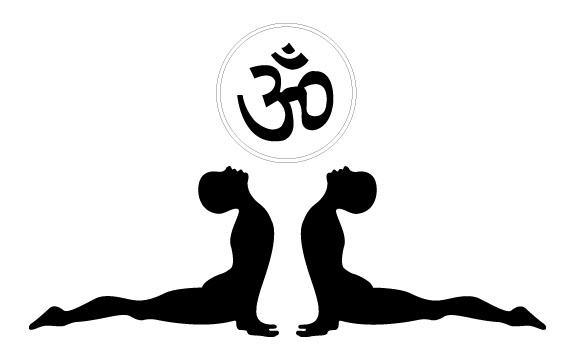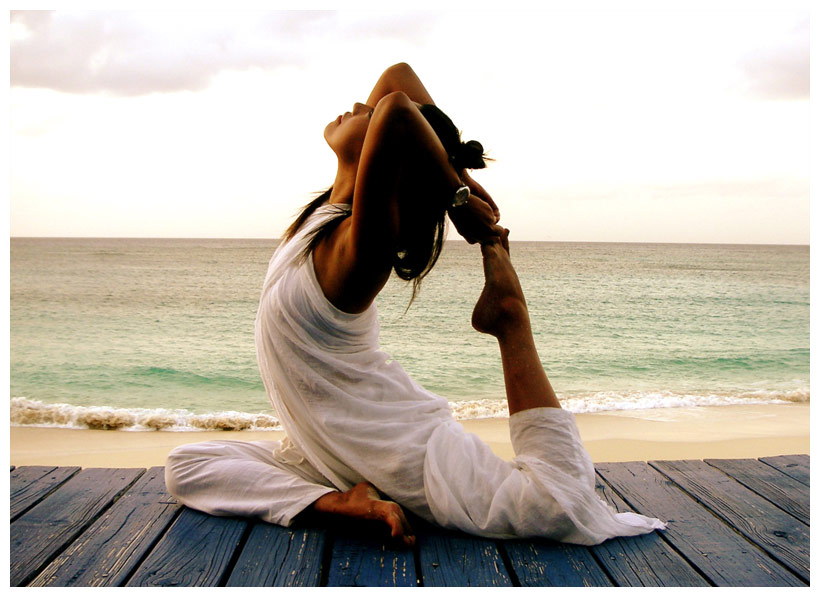
Strength training is a vital part of a balanced exercise routine that includes aerobic activity and flexibility exercises.
Regular aerobic exercise, such as running or using a stationary bike, makes your muscles use oxygen more efficiently and strengthens your heart and lungs. When you strength train with weights, you're using your muscles to work against the extra pounds (this concept is called resistance). This strengthens and increases the amount of muscle mass in your body by making your muscles work harder than they're used to.

Most people who work out with weights typically use two different kinds: free weights (including barbells, dumbbells, and hand weights) and weight machines. Free weights usually work a group of muscles at the same time; weight machines typically are designed to help you isolate and work on a specific muscle.
Most gyms or weight rooms set up their machines in a circuit, or group, of exercises that you perform to strengthen different groups of muscles.
People can also use resistance bands and even their own body weight (as in pushups, sit-ups, or body weight squats) for strength training.
Many people tend to lump all types of weightlifting together, but there's a big difference between strength training, powerlifting, and competitive bodybuilding!

Strength training uses resistance methods like free weights, weight machines, resistance bands, or a person's own weight to build muscles and strength. Olympic lifting, or powerlifting, which people often think of when they think of weightlifting, concentrates on how much weight a person can lift at one time. Competitive bodybuilding involves evaluating muscle definition and symmetry, as well as size.
Powerlifting, competitive weightlifting, and bodybuilding are not recommended for teens who are still maturing. That's because these types of activity can cause serious injuries to growing bones, muscles, and joints.

Getting Started
If you've started puberty, your body will have begun making the hormones necessary to help build muscle in response to weight training. If you haven't started puberty, though, you'll still be able to get stronger — you just won't see your muscles getting bigger.
Before you start strength training, you should be checked out by your doctor to make sure it's safe for you to lift weights.
Any time you start a new sport or activity, start out slowly so that your body gets used to the increase in activity. Even if you think you're not exerting yourself very much, if you've never lifted weights before, your muscles may be sore when you wake up the next day. And, because of something called delayed onset muscle soreness, the pain may be at its worst 2 or 3 days after you first exercise.
Before you begin any type of strength training routine, get some guidance and expert advice. Your coach or trainer can give you advice on how many times a week you should lift and what kinds of warm-up and cool-down activities you should do before and after lifting to avoid soreness or injury. Many trainers who work at schools, gyms, and in weight rooms are knowledgeable about strength training, but it's best to get advice from someone who is a certified fitness expert and experienced working with teens.

When lifting weights — either free weights or on a machine — make sure that there's always someone nearby to supervise, or spot, you. This person, called a spotter, encourages you and also can act as your coach, telling you if you're not doing a particular exercise correctly.
Having a spotter nearby is particularly important when using free weights. Even someone in great shape sometimes just can't make that last rep. It's no big deal if you're doing bicep curls; all you'll have to do is drop the weight onto the floor. But if you're in the middle of a bench press — a chest exercise where you're lying on a bench and pushing a loaded barbell away from your chest — it's easy to become trapped under a heavy weight. A spotter can keep you from dropping the barbell onto your chest.
Many schools offer weight or circuit training as units in their gym classes. Check to see if you can sign up. Don't be afraid to ask for pointers and tips about how much weight to start with and how to develop a routine.
What Are Some Dangers of Strength Training?
You may love the challenge of lifting, especially if you and your friends do it together. You'll definitely see results over a few months in your ability to progressively lift more weight. But there are a few things to look out for.
Because your bones, joints, and tendons are still growing and developing, it's easy to overdo it and strain or even permanently damage them. When you're in the middle of a strength-training session and something doesn't feel right to you, you feel pain, or if you hear or feel a "pop" when you're in the middle of a workout, stop what you're doing and have a doctor check it out before you resume training. It's possible you may need to modify your training or even stop lifting weights for a while to allow the injury to heal.

Another danger surrounding strength training is the use of anabolic steroids or other performance-enhancing drugs and preparations that supposedly help muscles develop. Steroid use is widespread in many sports — including football, swimming, biking, track and field, and baseball. But because many of their long-term effects on the body are still unknown (and because they are linked to health problems like cancer, heart disease, and sterility), resist the urge to try them. The benefit is definitely not worth the risk!
What Is a Healthy Routine?
If you take a few minutes to watch the guys and girls lift weights at your school, you'll see there are lots of different ways to train with weights. Try a few good basic routines that you can modify as you start to train harder later on.
If you're just starting out in the weight room, most fitness experts recommend you begin by training three sessions a week, ranging from 20 minutes to 1 hour (including warm-up and cool-down periods), allowing at least a day off between sessions. It's best to work only two or three muscle groups during each session. For example, you can work your leg muscles one day, your chest, shoulders, and triceps at the next session, and your back and biceps on the last.
Before you head for the weight bench, warm up your muscles by spending 5-10 minutes pedaling on a stationary bicycle or by taking a brisk walk around the gym. After finishing your workout, cool down by stretching all the major muscle groups to avoid injuries and keep your muscles flexible.

You can use many different exercises for each body part, but the basics — like bench presses, lat pull-downs, and squats — are great to start with. Learn proper technique first, without any added weight. Perform three sets of 8-10 repetitions (or reps) of each exercise, starting out with a light weight to warm up and increasing the weight slightly with the second and third sets. (Add more weight only after you can successfully perform 8-15 repetitions in good form.) Perform two to three different exercises for each body part to make sure you work each muscle in the group effectively.
Here are some basic rules to follow in strength training:
- Start with body weight exercises for a few weeks (such as sit-ups, pushups, and pull-ups) before using weights.
- Work out with weights about three times a week. Avoid weight training on back-to-back days.
- Warm up for 5-10 minutes before each session.
- Spend no more than 40 minutes in the weight room to avoid fatigue or boredom.
- Work more reps; avoid maximum lifts. (A coach or teacher can give you specifics based upon your needs.)
- Ensure you're using proper technique through supervision. Improper technique may result in injuries, particularly in the shoulder and back.
- Cool down for 5-10 minutes after each session, stretching the muscles you worked out.
Don't rely on strength training as your only form of exercise. You still need to get your heart and lungs working harder by doing some kind of additional aerobic exercise for a minimum of 20-30 minutes per session. Doctors recommend an hour a day of moderate to vigorous activity — so on days when you're not lifting weights, you may want to get more aerobic activity.
Strength training is a great way to improve strength, endurance, and muscle tone. But remember to start slowly, use proper form, avoid heavy weights, and increase workouts gradually to prevent injury. Just a few short sessions a week will really pay off — besides better muscle tone and definition, you may find that you have more energy and focus in both sports and school.










